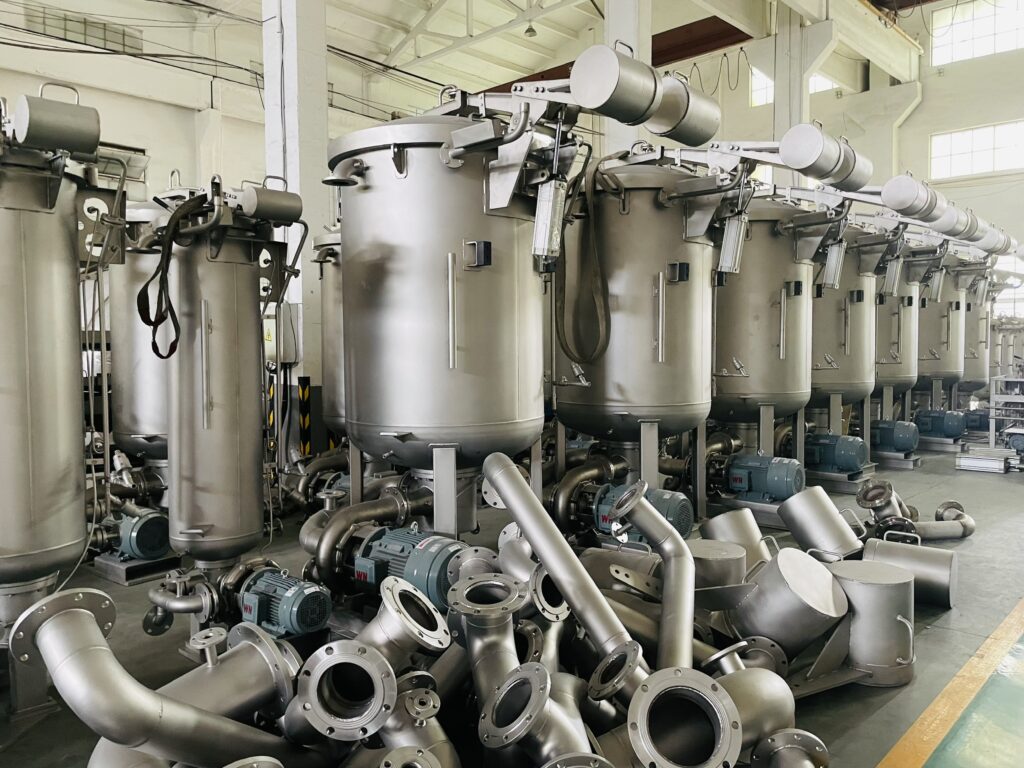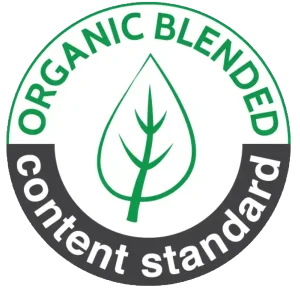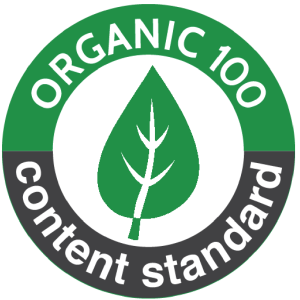For any textile mill, the dyeing machine is the heart of the value-addition process, transforming raw fabric into a vibrant, finished product. However, it is also a complex piece of equipment operating in a harsh environment of high temperatures, constant pressure, and corrosive chemicals. In this high-stakes setting, a robust dyeing machine maintenance program is not a “cost center”—it is a profit center.
Effective dyeing machine maintenance relies on a multi-stage schedule, from daily operator checks to annual overhauls. This proactive approach prevents common failures, reduces operating costs by over 30%, ensures color consistency, and extends the life of critical industrial dyeing equipment.
1. Why Proactive Maintenance is a Non-Negotiable Strategy
Nội dung tóm tắt
ToggleWhile many small to medium-sized enterprises (SMEs) tend to ignore maintenance until a breakdown occurs, this reactive approach is incredibly costly. According to the European Apparel and Textile Confederation (EURATEX), a staggering 45% of all production downtime in dye houses is due to a lack of a proper maintenance schedule. This guide provides a comprehensive, six-stage checklist and expert solutions to help you establish a world-class dyeing machine maintenance program that will reduce costs, improve quality, and maximize uptime.
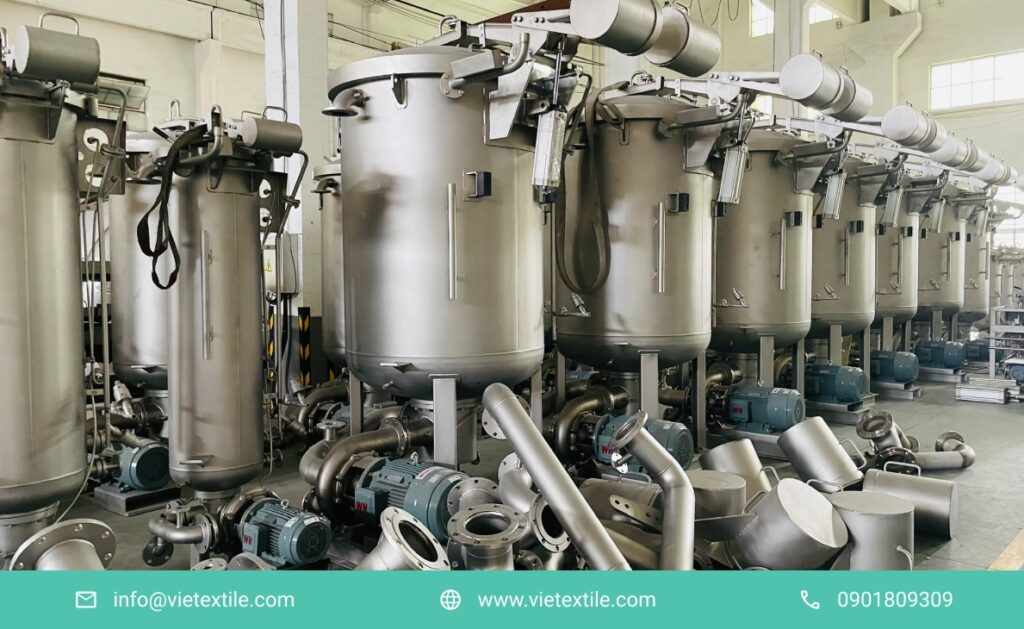
Neglecting dyeing machine maintenance leads to a predictable cascade of expensive failures. Common issues like fouled heat exchangers, clogged filters, and worn pump seals don’t just cause downtime; they lead to inconsistent heating and poor circulation, resulting in entire batches of fabric being ruined due to uneven dyeing. A proactive strategy prevents these issues, ensuring your machine runs reliably and efficiently.
2. Maintenance Requirements for Different Dyeing Machines
Every fabric dyeing machine has its own operational profile—defined by its mechanical design, heat tolerance, pressure thresholds, and contact materials. This means dyeing machine maintenance procedures must be customized for each machine type, whether it’s a jet, overflow, beam, or winch dyeing system. Using the wrong cleaning pressure or incompatible chemicals can lead to surface damage, seal wear, or sensor misalignment. A machine-specific, scheduled maintenance plan is critical to ensure smooth operation, prevent costly downtime, and maximize equipment lifespan.
- Jigger Dyeing Machines: Jigger dyeing machine maintenance are commonly used for woven fabrics, particularly woven polyester types like taffeta, peach skin, and satin. Because the fabric is continuously wound across two main rollers, precise tension control is essential. Special attention must be paid to the roller shafts, bearings, and rotational speed regulators, all of which operate under constant mechanical stress. Improper maintenance or misalignment in speed or tension can lead to fabric wrinkling, shade variation, or selvage damage. Therefore, a structured maintenance routine is crucial to ensuring high-quality dyeing and extending machine lifespan.
- Jet Dyeing Machines: Jet dyeing machines are the true workhorses for processing polyester and cotton-knitted fabrics, as well as nylon and polyester woven fabrics. Operating at high velocity with closed-loop dye circulation, these machines depend on high-pressure pumps, medium-range nozzles, airflow speed, and mechanical seals to function effectively. These components are under constant stress, making them the most critical parts for routine dyeing machine maintenance. Neglecting these can lead to dye blotching, uneven shades, or costly production halts. Implementing a dedicated maintenance plan ensures optimal dyeing results and maximizes machine uptime.
- Round-tube dyeing machines are specially designed for cotton dyeing fabrics, cotton towels, and natural fiber textiles. These machines operate under high pressure with large nozzles, allowing deep and uniform dye penetration. Critical components that require regular dyeing machine maintenance include the butterfly valve, main pump motor, wind motor, wind speed calibration system, and speed synchronization module. Neglecting these can result in machine vibration, inconsistent color output, or operational failure. Precise tuning of wind speed and synchronization across all motors is essential for reliable performance and consistent fabric quality.
- Continuous Dyeing Ranges: are engineered for open-width wet finishing processes at high production volumes, often running across multiple shifts without pause. In such demanding conditions, consumable parts like rollers, sensors, control valves, rubber O-rings, and bearings undergo rapid wear. This makes dyeing machine maintenance more critical and frequent compared to batch dyeing systems. Regular inspection and timely replacement of these components are essential to prevent unexpected breakdowns, maintain dyeing consistency, and support uninterrupted production. A proactive maintenance approach directly impacts both fabric quality and operational efficiency.
Whether it’s a Jet, Jigger, Round-tube, or Continuous Dyeing Range, the golden rule of dyeing machine maintenance remains the same: “maintain before failure; not after.” This proactive mindset is the foundation of smart textile operations. Scheduled maintenance prevents unplanned downtime, ensures dyeing consistency, and significantly extends equipment life. By detecting early signs of wear or misalignment, businesses can reduce repair costs and protect order fulfillment schedules; turning maintenance from a cost into a long-term investment.
3. Safety First: Before You Begin Any Maintenance Task
There’s no universal dyeing machine maintenance schedule that fits all factories. Each facility has unique workloads, machine types, and production cycles. However, if you operate a small to medium-sized dyeing plant, you can adopt the following practical maintenance plan, drawn from real-world operations across Vietnam. This recommended schedule helps you stay ahead of unexpected breakdowns, control maintenance costs, and sustain consistent performance across your dyeing operations.
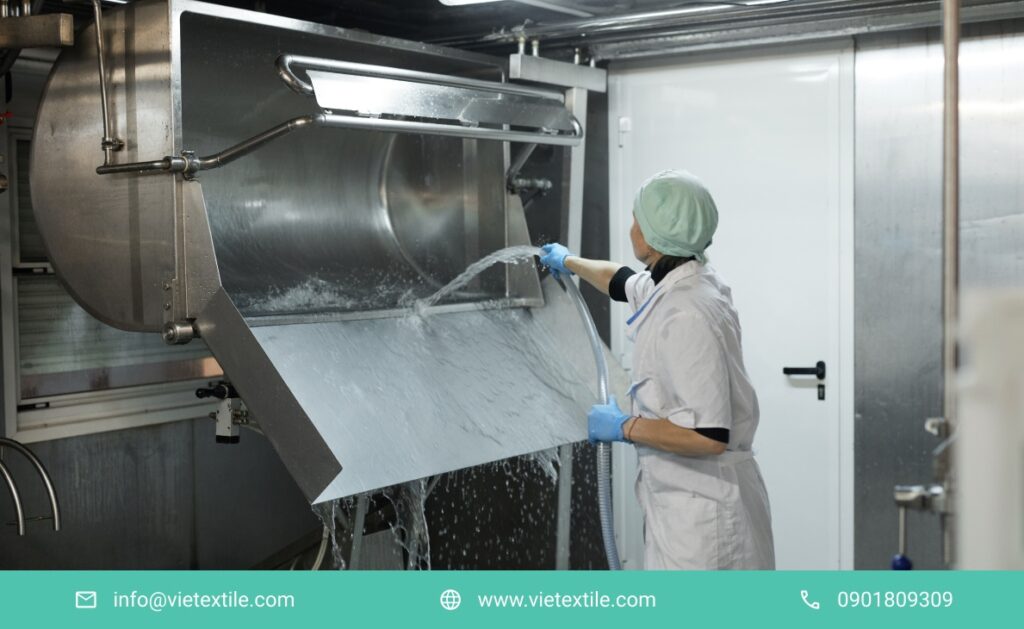
Industrial machinery is inherently hazardous, especially in high-pressure systems like fabric dyeing machines. Before performing any dyeing machine maintenance, safety must be the top priority. Technicians must ensure the power supply is completely shut off, pressure is released, and all standard safety procedures are strictly followed. Even a minor oversight can lead to serious injury, equipment damage, or full production stoppage. Promoting a strong safety culture is essential for any modern textile facility.
- Lockout/Tagout (LOTO): Always perform a full LOTO procedure before beginning any mechanical or electrical work. This involves completely de-energizing the machine from its power source and locking the disconnect switch so it cannot be accidentally turned on. For detailed standards, refer to the official OSHA Lockout/Tagout guidelines.
- Personal Protective Equipment (PPE): is essential for any dyeing machine maintenance task. Technicians must wear heat-resistant gloves, chemical-resistant goggles, and steel-toed safety boots to protect themselves from high temperatures, corrosive chemicals, and mechanical hazards. Dyeing equipment often operates under extreme conditions, and even brief exposure can lead to serious injury. Proper PPE usage not only safeguards individuals but also reflects a strong safety culture within the facility..
- Confined Space Entry: Confined space entry, such as cleaning the interior of a body dye vessel (kier), requires strict adherence to safety protocols. Before entry, technicians must ensure adequate ventilation, conduct gas and oxygen level checks, and have a standby supervisor present at all times. Dyeing vessels can harbor hazardous gases or oxygen-deficient atmospheres, posing life-threatening risks. That’s why confined space safety is a critical part of any professional dyeing machine maintenance training program.
4. The 6-Stage Maintenance Schedule: A Detailed Checklist
This schedule, grounded in best practices from leading dyeing factories, serves as a clear and actionable roadmap for your dyeing machine maintenance program. Implementing a structured maintenance plan not only prevents costly breakdowns but also ensures your equipment performs at optimal efficiency. It’s a strategic step that helps reduce operational risk, maintain consistent dyeing quality, and extend the service life of your machinery—turning maintenance into a long-term productivity booster..
4.1 Stage 1: The Initial 500-Hour Service (For New Machines)
For a brand-new dyeing machine, the first 200 to 500 hours of operation mark a critical break-in period. During this phase, mechanical components like bearings, pumps, and seals begin to align, settle, and wear into their optimal positions. Close monitoring of temperature, vibration, and performance is essential to catch early anomalies and make timely adjustments. A well-managed break-in period helps ensure long-term machine stability, minimizes unexpected wear, and lays the groundwork for efficient dyeing machine maintenance.
- Task: As part of early-stage dyeing machine maintenance, it is essential to re-torque all bolts on the heat exchanger and across the machine frame to ensure they are properly secured and can withstand thermal expansion during operation. Additionally, inspect and re-tension all drive belts to maintain optimal belt tension and prevent slippage, vibration, or uneven power transmission. These steps are critical to ensuring your dyeing machine remains stable, safe, and efficient throughout its service life.
- Why: During the initial operation, thermal expansion and mechanical vibration can cause bolts to slightly loosen, even if they were properly torqued during assembly. Left unchecked, this can lead to leaks, misalignment, or even long-term structural issues in the dyeing machine. Performing this one-time re-torque procedure during the break-in phase is a simple yet crucial step to ensure sealing integrity and mechanical stability going forward.
4.2 Stage 2: Post-Shift Daily Checks (The Operator’s Role)
This is the foundation of your dyeing machine maintenance program, performed by the operator at the end of every shift.
- Checklist:
- Clean or replace the main circulation pump’s filter core.
- Inspect and wipe down the main door’s rubber gasket and the filter housing seal.
- Flush the chemical dosing pump with clean water after the last injection.
- Drain any condensation from the air-water separator for the pneumatic system.
- Accountability: Use a sign-off sheet where the operator confirms these tasks are completed. This simple step in your dyeing machine maintenance prevents 80% of minor running issues.
To ensure no dyeing machine maintenance step is overlooked, the assigned technician must sign off at the end of each shift. This simple verification step serves as both a cross-check and an accountability mechanism, reinforcing a culture of responsibility and diligence. In continuous production environments like textile dyeing, signed maintenance logs also provide traceability for audits, troubleshooting, and performance reviews—making them an essential part of operational integrity.
4.3 Stage 3: Weekly Inspections (The Technician’s Review)
Once a week, a technician should perform a more detailed inspection. This is a critical phase for detecting hidden faults that may not be obvious during normal machine operation. By closely monitoring abnormal sounds, subtle vibrations, or temperature deviations, maintenance teams can proactively plan part replacements, preventing unexpected breakdowns. It’s also an ideal window to gather real-world performance data to fine-tune maintenance intervals based on actual wear patterns; ensuring cost efficiency and sustained productivity.
- Checklist:
- Check the oil level of the main pump’s bearings (it should be in the middle of the sight glass).
- Manually test the motor’s overload relays to ensure all safety alarms are functional.
- Clean the control panel and inspect all gauges (pressure, temperature) for clear readings.
- Apply grease to all lubrication points (zerk fittings) as specified by the OEM.
- Check bolts on the machine base, stairs, and safety guards for tightness.
As part of your routine dyeing machine maintenance, it’s essential to perform the following checks: Inspect the safety valve, main pump shaft, and auxiliary tank pump shaft to ensure pressure control and mechanical stability. Evaluate the door opening/closing mechanisms, self-sealing gaskets, and couplings for tightness and wear. Clean all analog sensors and electrical cabinet filters to maintain signal accuracy and prevent system failures. Lastly, check for leaks around mechanical seals and gaskets, as these are common sources of pressure loss and thermal inefficiency in dyeing operations.
4.4 Stage 4: Monthly Mechanical and Electrical Checks
This deeper inspection aims to catch developing problems.
- Checklist:
- Test the pressure relief safety valve to ensure it’s not stuck.
- Inspecting the safety valve, main pump shaft, and auxiliary tank pump shaft is a critical part of dyeing machine maintenance
- Check the door’s opening/closing mechanism and the integrity of the main coupling.
- Clean all analog sensor probes and the filters for the main electrical cabinet’s cooling fans.
- Listen closely to the gearbox during operation for any signs of rumbling or whining that could indicate bearing wear, and rubber O-ring.
If you notice shaft misalignment, slight vibration, or unusual heat generation in the gearbox, these are early signs of potential mechanical failure. Such symptoms may indicate bearing wear, imbalance in the drive shaft, or poor lubrication—and require immediate technical attention. Delaying intervention can result in severe damage, including shaft breakage, motor burnout, or complete production downtime. In textile manufacturing, even the slightest abnormal vibration can escalate quickly—proactive response is critical.
4.5 Stage 5: Semi-Annual Deep Dive (The 6-Month Service)
This process requires considerable machine downtime and must be handled by skilled technicians. Tasks such as disassembling critical components, realigning shafts, calibrating sensors, or checking pressure valves demand precision and a deep understanding of the dyeing system. While it may consume time and resources, it is essential for ensuring safety, extending equipment lifespan, and maintaining consistent production efficiency.
- Checklist:
- Change the gearbox oil according to the manufacturer’s specifications.
- Inspect all heat exchanger valves, check valves, and counterweight systems.
- Thoroughly clean the inside of the main electrical cabinet with a dedicated electronics vacuum.
- Check the tension and condition of all motor drive belts.
This is an advanced stage of dyeing machine maintenance, requiring either highly skilled in-house technicians or collaboration with external specialized service providers. Tasks such as shaft alignment, closed-system pressure testing, sensor calibration, and software diagnostics involve complex procedures where errors can lead to major equipment failures. Investing in qualified personnel or partnering with trusted maintenance experts helps ensure technical accuracy, operational safety, and long-term machine durability.
4.6 Stage 6: The Annual Overhaul (Full System Inspection)
At least once a year, a full-scale professional overhaul of your dyeing machine is essential. This represents the most comprehensive phase of the dyeing machine maintenance program, covering mechanical inspection, recalibration of electrical and automation systems, replacement of worn-out parts, and control software updates if applicable. A scheduled overhaul helps prevent catastrophic failures, improves operational efficiency, reduces energy consumption, and extends the service life of your equipment.
- Checklist:
- Perform a full internal inspection of the stainless-steel vessel, looking for any signs of pitting corrosion or weld fatigue.
- Inspect and test all diaphragm valves, butterfly valves, and piston valves. Replace worn diaphragms or seals.
- Recalibrate all temperature and pressure sensors against a certified reference device to ensure accuracy.
- Documentation: Every task, measurement, and part replacement should be logged in a maintenance journal for that specific machine. This history is invaluable for troubleshooting future issues.
Case Study: A Factory’s Successful Maintenance Turnaround
A textile factory in Southeast Asia specializing in cotton dyeing was experiencing an average of 14 hours of unscheduled downtime per month, costing them over $10,000 USD in wasted energy, materials, and labor. After implementing a structured dyeing machine maintenance program based on the checklist above, the results after three months were dramatic:
- Downtime was reduced to less than 2 hours per month.
- Repair costs decreased by 35% due to proactive part replacement.
- Overall productivity increased by 12% because the machines were always ready to run.
The Power of Technology in Modern Maintenance
- IoT Sensors: Retrofitting machines with IoT sensors allows for continuous monitoring of vibration and temperature, enabling a move towards a more efficient predictive maintenance strategy.
- CMMS Software: Using a Computerized Maintenance Management System (like Fiix or UpKeep) helps schedule tasks, track part inventory, and automatically generate work orders, bringing professional organization to your dyeing machine maintenance efforts.
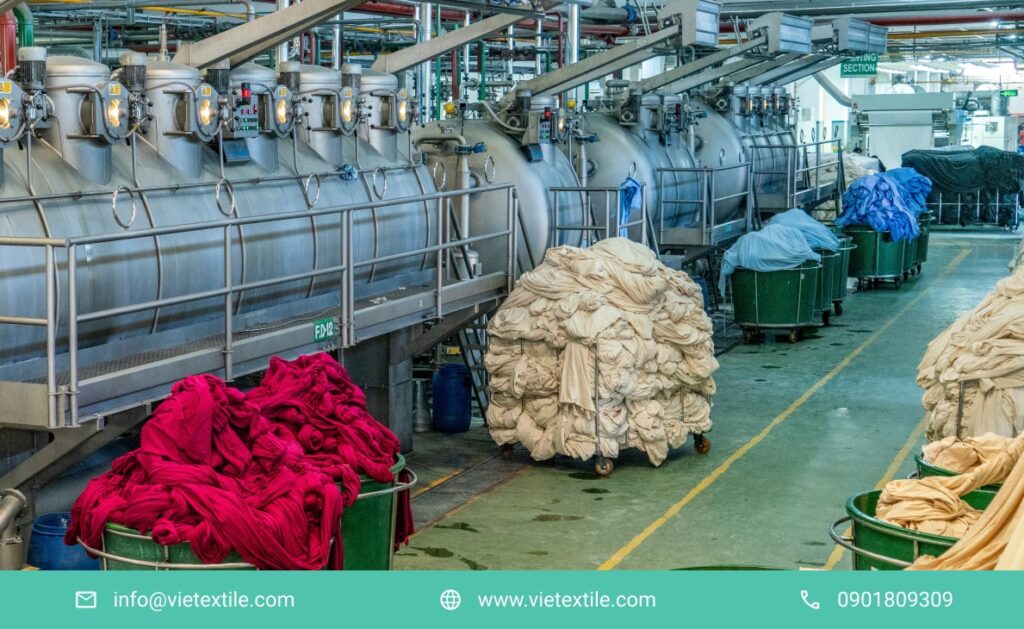
Conclusion: Maintenance as a Competitive Advantage
A disciplined, multi-stage dyeing machine maintenance program is not an expense—it is a powerful investment in quality, efficiency, and profitability. By shifting from a reactive mindset to a proactive and predictive strategy, you can significantly reduce costs, increase productivity, and ensure your factory consistently delivers high-quality products.
Your Partner in Dyeing Machine Performance
VieTextile is a leading partner for textile mills in Vietnam, providing expert dyeing machine maintenance services, genuine textile machinery spare parts, and emergency support. We help our clients implement smart maintenance strategies and upgrade their systems with modern sensor technology.
Contact us today for a consultation on building a maintenance program that drives results for your factory.
FAQ
1. How often should a dyeing machine really be maintained? It depends on usage, but a good baseline is: perform minor operator checks daily/weekly, have a technician perform deeper inspections monthly, and schedule a full professional overhaul annually.
2. Should we handle maintenance in-house or hire an external service? Your in-house team, if properly trained, can handle all daily, weekly, and most monthly tasks. However, it is highly recommended to partner with a professional service provider for complex tasks like the annual overhaul, sensor calibration, and major component replacements.
3. What are the earliest warning signs that a dyeing machine is about to fail? Listen for changes! An increase in machine vibration, a new noise from a motor or pump, or a cycle that takes longer to heat up are all early indicators that a component is starting to fail.
4. Is there software that can help me plan my dyeing machine maintenance? Yes. CMMS (Computerized Maintenance Management System) software like UpKeep or Fiix is designed for exactly this. It allows you to schedule tasks, log work, and track the maintenance history of every machine.
5. Besides downtime, what is the biggest cost of poor maintenance? Inconsistent quality. A poorly maintained machine with fluctuating temperatures or pressure will produce inconsistent shades, leading to entire batches being rejected by clients, which is often far more costly than the repair itself.

